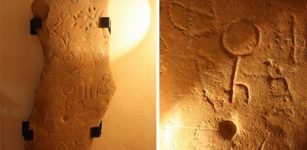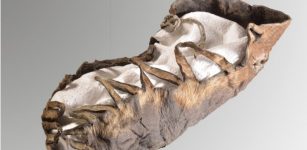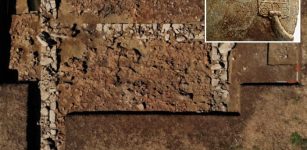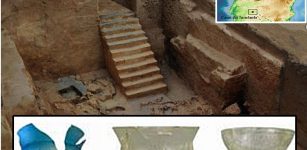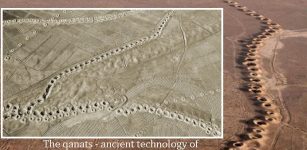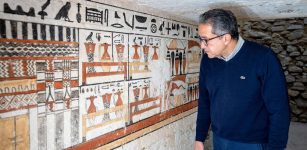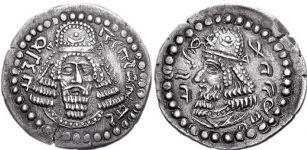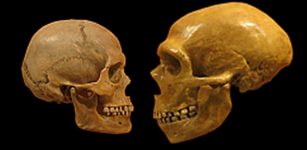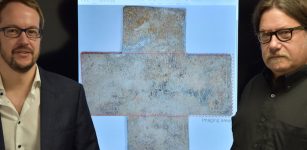Partial Skull Fossils Found In China Could Be A New Species -‘A Kind Of Unknown Or New Archaic Human’, Researcher Says
AncientPages.com - Two partial archaic human skulls, from the Lingjing site, Xuchang, central China, provide a new window into the biology and populations patterns of the immediate predecessors of modern humans in eastern Eurasia.
The study of these skull fragments found in China shows that the ancestors of modern humans had features that resembled Neanderthals.
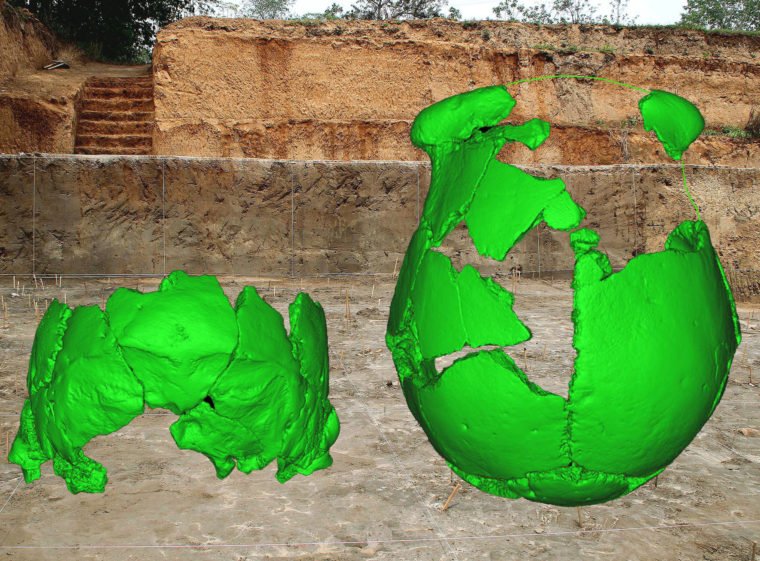
Virtual reconstructions of the Xuchang 1 and 2 human crania, superimposed on the archeological site where they were discovered. Image credit: Xiujie Wu.
The Xuchang 1 and 2 crania, were discovered in situ in the Lingjing site in Xuchang County of Henan Province between 2007 and 2014, and they demonstrate eastern Eurasian ancestry.
Dated to about 100,000 years ago, the Xuchang fossils present many differentf features, such as:
With late archaic (and early modern) humans across the Old World, they share
- a large brain size and lightly built cranial vaults with modest brow ridges;
With earlier (Middle Pleistocene) eastern Eurasian humans, they share
- a low and broad braincase, one that rounds onto the inferior skull.
With western Eurasian Neandertals, they share
- two distinct features -- the configuration of their semicircular canals and the detailed arrangement of the rear of the skull.
However, the skulls also differ from the western Neanderthals of Europe and the Middle East. They have thinner brow ridges and less robust skull bones, similar to early modern humans and some other Asian fossils, writes Science Magazine.
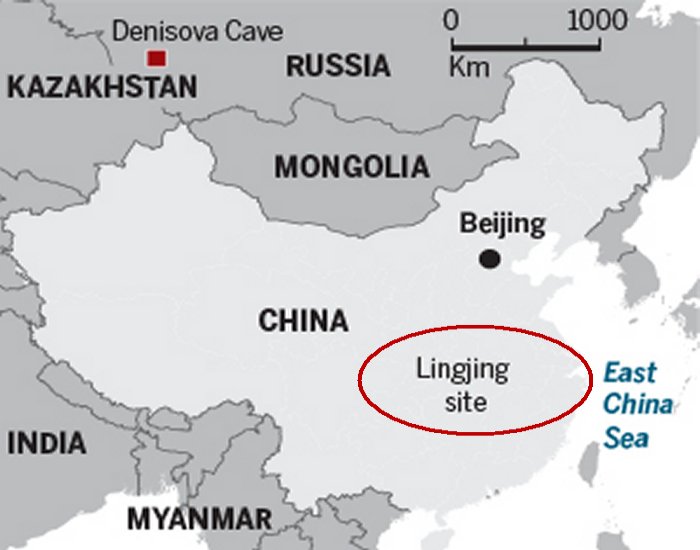
Discovery of the China skulls, 4,000 kilometers from Denisova Cave at the site of Lingjing in Henan province in China. Image via Science Magazine
“They are not Neandertals in the full sense,” says co-author Erik Trinkaus, a paleoanthropologist at Washington University in St. Louis in Missouri.
According to the paper, the new fossils are not late-occurring representatives of other archaic humans such as H. erectus or H. heidelbergensis, two species that were known to be ancestral to both Neandertals and modern humans. The skulls are too lightly built and their brains are too big.
See also:
Denisovan DNA Detected In Modern South Asians – UCLA Scientists Reveal
Mysterious Archaic Cavemen – Denisovans – Were Relatives To Neanderthals And Humans
Sima De Los Huesos Hominins Were Closer Related To Neanderthals Than To Denisovans
Denisovans: Ancient Teeth Reveal More Ancient Secrets Of Human Relatives
Paleoanthropologist Rick Potts of the Smithsonian National Museum of Natural History in Washington, D.C states that "the skulls do share traits with some other fossils in east Asia dating from 600,000 to 100,000 years ago that also defy easy classification."
Those features include a broad cranial base where the skull sits atop the spinal column and a low, flat plateau along the top of the skull.
The Lingjing crania also resemble another archaic early human skull that dates to 100,000 years ago from Xujiayao in China’s Nihewan Basin 850 kilometers to the north, according to co-author Xiu-Jie Wu, a paleoanthropologist at IVPP.
"Those fossils and the new skulls “are a kind of unknown or new archaic human that survived on in East Asia to 100,000 years ago,” Xiu-Jie Wu says.
Trinkaus says "the discovery of these skulls of late archaic humans, from Xuchang, substantially increases our knowledge of these people."
It is very important because "the biological nature of the immediate predecessors of modern humans in eastern Eurasia has been poorly known from the human fossil record, he adds.
AncientPages.com
Science Magazine - full report


